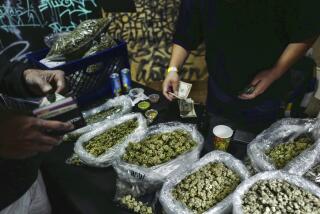We Could Have Avoided a Cool $50 Billion for S&Ls; by Staying With Regulation
- Share via
Economic deregulation has enjoyed a spectacular vogue during the Reagan years. But anybody who still has illusions about its virtues should consider the nation’s savings-and-loan industry.
S&Ls--also; known as “thrift” institutions--began as nonprofit associations, designed to provide small depositors a safe place to accumulate savings and obtain mortgage loans. The virtuous savings and loan versus the greedy commercial bank was idealized in the Jimmy Stewart movie “It’s a Wonderful Life.”
Today, the thrift industry has become the worst banking calamity since the Great Depression. Thirty percent of the industry is running in the red; hundreds of S&Ls; have been closed. Experts are divided over whether the ultimate taxpayer cost will be $40 billion to $50 billion, or $80 billion to $100 billion.
The Federal Home Loan Bank Board, the industry’s regulator (after a fashion), is hastily arranging fire sales of ailing S&Ls;, in hopes of getting some of the liability off the government’s books.
How could this happen? For nearly half a century, savings institutions were pillars of financial stability. The New Deal gave the thrift industry and home ownership a boost by providing deposit insurance, as well as a Federal National Mortgage Assn. to buy up mortgages that S&Ls; wrote and to pump in new funds.
But since government was guaranteeing the money, government was necessarily a stern policeman. Regulations limited the interest that thrift institutions (and banks) could pay savers, to keep rates predictable and low. And the government sharply restricted speculation by S&Ls.; The approach was conservative with a small c.
In the 1970s, inflation struck. S&Ls; found themselves stuck with 30-year, 7% mortgages, while they had to pay depositors 10% and 12% to attract savings. Congress delayed permitting thrifts to issue variable-rate mortgages as a way for them to share the risk of inflation with borrowers. The first wave of deregulation, permitting banks and money-market mutual funds to compete head-to-head with S&Ls;, worsened the squeeze. But despite losses, as late as 1980 the industry was essentially solvent.
In the 1980s the Reagan Administration decided to turn loose S&Ls; as entrepreneurs--only it neglected to cancel the deposit insurance. A new breed of entrepreneur displaced the Jimmy Stewart types, attracted by the gospel of deregulation. Several states, led by California and Texas, permitted S&Ls; to become full-blown speculators, using federally insured deposits.
A savings and loan could invest as much as 100% of the depositors’ money in real-estate ventures, fast-food franchises, oil wells, anything that looked like a money-maker. If the investment panned out, the entrepreneur got rich; if it failed, Uncle Sam picked up the tab. This was too good to be true.
In 1982 the Reagan Administration permitted S&Ls; to use Wall Street money brokers to collect unlimited funds in short-term deposits, repealing a previous 5% limit on such funds. This meant that a tiny savings association, with a few hundred thousand dollars of capital, could offer half a point interest above what the market was paying and become a billion-dollar player overnight. Its potential losses were unlimited.
In mid-1983, a conservative Republican, Edwin Gray, was named chairman of the Federal Home Loan Bank Board. Gray had been policy director of the White House staff; he had worked for Ronald Reagan since 1966. But he had also been in the savings-and-loan business himself, and he was appalled at what he saw.
Gray tried to stop the hot money coming from money brokers. He wrote regulations limiting S&Ls;’ ability to invest in speculative deals. He sought to tighten accounting rules, to force thrifts to be adequately capitalized.
He also asked the Office of Management and Budget for additional bank examiners. At the time, the starting salary of a bank examiner was $14,000, and one-quarter of the examining force was quitting every year.
Gray quickly found himself damned as a re-regulator. The additional examiners were denied. The White House blocked several of his proposals. Congressional allies of the S&L; industry blocked others. Eventually, only after irrevocable damage had been done, did the mood, and the policies, toughen.
“There was a mentality in those days that deregulation would solve everything,” says Gray, who resigned last year. “Nobody seemed to understand that thrift institutions were not free-market institutions because they were backed by the full faith and credit of the United States.”
There is nothing conservative about letting speculators run wild with federally insured money. Taking in deposits and making home-mortgage loans is essentially a pretty simple business. It would have been far better for all concerned had S&Ls; stuck to their knitting and had government continued to supervise them. That basic economics lesson will cost us upwards of $50 billion.
More to Read
Inside the business of entertainment
The Wide Shot brings you news, analysis and insights on everything from streaming wars to production — and what it all means for the future.
You may occasionally receive promotional content from the Los Angeles Times.









